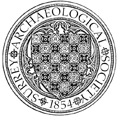Keeping the lights on at Hampton Court
London Archaeologist's Annual Lecture will this year feature a report on archaeological works alongside the project to replace electrical cabling within Hampton Court. This has offered an opportunity to excavate within the buildings and is revealing earlier phases of construction.
Admission free but contact Becky Wallower to register your interest and for information: becky.wallower@dial.pipex.com


